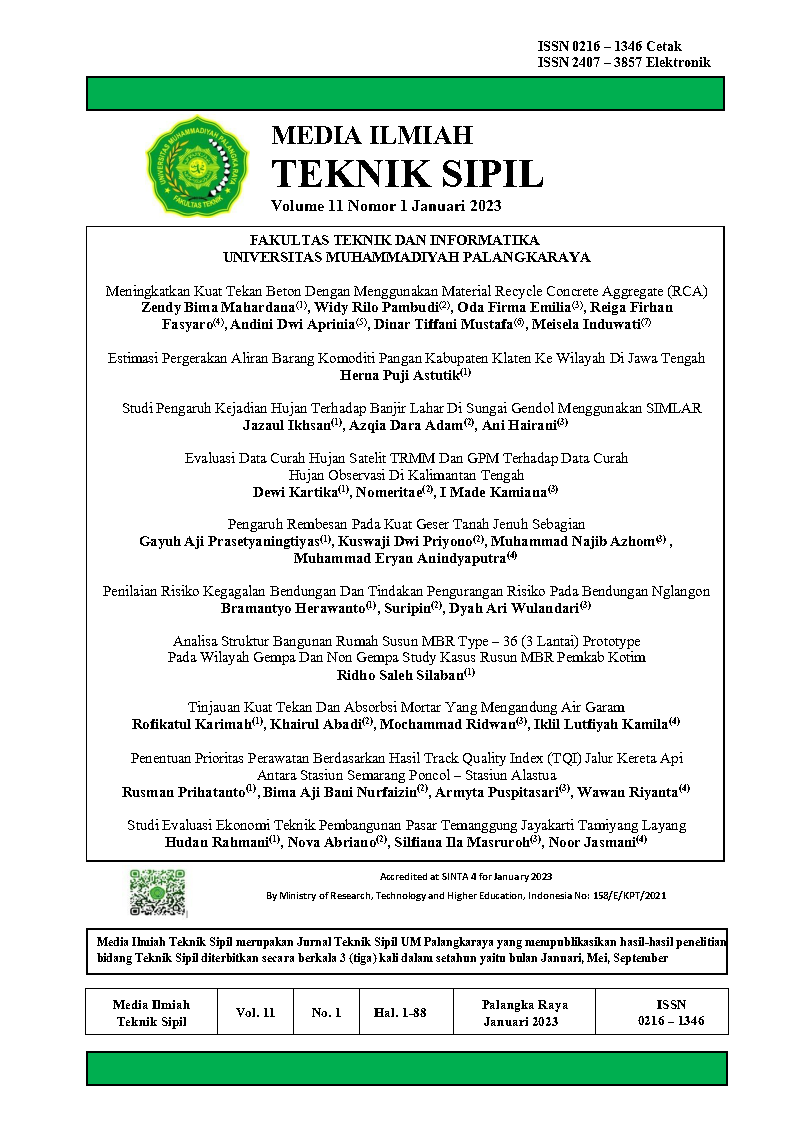Penilaian Risiko Kegagalan Bendungan Dan Tindakan Pengurangan Risiko Pada Bendungan Nglangon Risk Assessment Of Dam Failure And Risk Reduction Measures At Nglangon Dam
Main Article Content
Abstract
The dam failure that has been operating has a great potential to occur if the administrator does not carry out proper maintenance. Dams require proper and correct maintenance and operation which will greatly affect the safety of the dam itself. Especially for dams that have been operating for a long time, major maintenance activities including repairs and rehabilitation are urgently needed to avoid the worst conditions such as facing natural disasters. Because a dam can cause a large impact if it fails, it is necessary to have a risk assessment to analyze and evaluate the hazard of the dam. Risk research conducted at the Nglangon Dam uses the event tree method, traditional and modified ICOLD. Based on the results of individual and group extreme probability analysis, both traditional and event tree methods, the risk probability value is above the acceptable risk value threshold of 1.00E-05, which means that the Nglangon Dam requires further action. This is in line with the results of the ICOLD modified risk assessment method with classification III (high) which means that the Nglangon Dam is included in a dam that requires special attention and corrective actions to reduce the level of risk in the Nglangon Dam
Downloads
Article Details

This work is licensed under a Creative Commons Attribution-ShareAlike 4.0 International License.
All rights reserved. This publication may be reproduced, stored in a retrieval system, or transmitted in any form or by any means, electronic, mechanical, photocopying, recording.
References
Buldan, R., Suharyanto, S., & Sriyana, S. (2021). Penilaian Risiko Kegagalan Bendungan Kedungombo Sebagai Dasar Prioritas Pemeliharaan Bendungan. JMTS: Jurnal Mitra Teknik Sipil, 4(3), 557. https://doi.org/10.24912/jmts.v0i0.12616
Firmansyah, R., & Sriyana, I. (2022). Penilaian Risiko Bendungan Saguling Dengan Metode Tradisional, Metode Pohon Kejadian Dan Metode Modifikasi Icold. Wahana Teknik Sipil: Jurnal Pengembangan Teknik Sipil, 27(1), 76. https://doi.org/10.32497/wahanats.v27i1.3673
Indrawan, D., Tanjung, M. I., & Sadikin, N. (2013). Penilaian Indeks Resiko Metode Modifikasi Andersen dan Modifikasi ICOLDS untuk 12 Bendungan di Pulau Jawa. Jurnal Sumber Daya Air, No.2, 93–104.
Kementerian Pekerjaan Umum. (2011). Pedoman Teknis Penilaian Risiko Bendungan.
World Bank. (2017). Meningkatkan Keamanan Bendungan dan Perlindungan Masyarakat Umum melalui Rencana Tindak Darurat dan Rencana Kontinjensi Berbasis InaSAFE. The World Bank Group.
